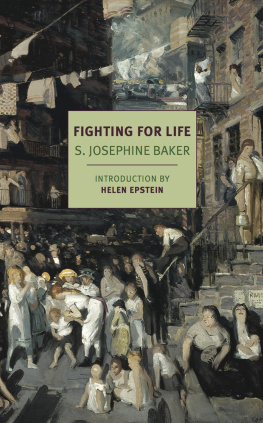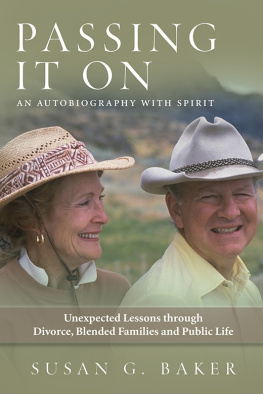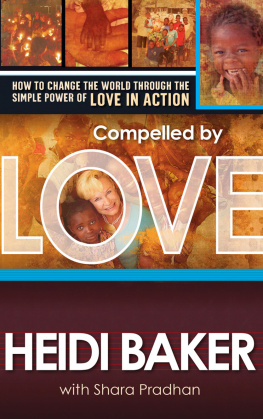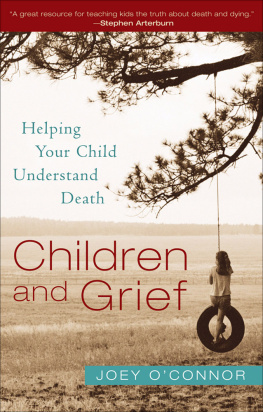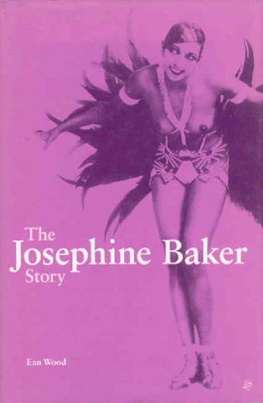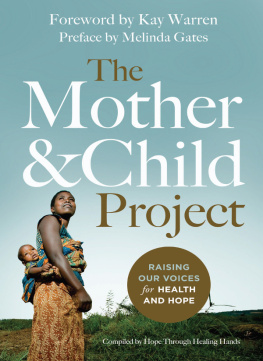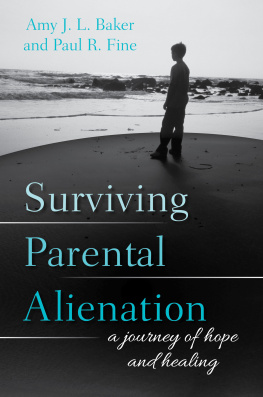w

SARA JOSEPHINE BAKER (18731945) was born in Poughkeepsie, New York, and attended the Womans Medical College of the New York Infirmary. As the first director of New Yorks Bureau of Child Hygiene from 1908 to 1923, Bakers work with poor mothers and children in the immigrant communities of New York City dramatically reduced maternal and child mortality and became a model for cities across the country. On two occasions she helped to track down Mary Mallon, the cook who came to be known as Typhoid Mary. Baker wrote fifty journal articles and more than two hundred pieces for the popular press about preventive medicine, as well as six books: Healthy Babies, Healthy Mothers, Healthy Children (all 1920), The Growing Child (1923), Child Hygiene (1925), and her autobiography, Fighting for Life (1939). In the 1930s Baker, along with her partner of many years, the novelist Ida Wylie, and their friend Dr. Louise Pearce, moved to a two-hundred-year-old farm in New Jersey, where she lived until her death.
HELEN EPSTEIN is a writer specializing in public health and an adjunct professor at Bard College. She has advised numerous organizations, including the United States Agency for International Development, the World Bank, Human Rights Watch, and UNICEF. She is the author of The Invisible Cure: Why We Are Losing the Fight Against AIDS in Africa and has contributed articles to many publications, including The New York Review of Books and The New York Times Magazine.
FIGHTING FOR LIFE
S. JOSEPHINE BAKER
Introduction by
HELEN EPSTEIN
NEW YORK REVIEW BOOKS

New York
THIS IS A NEW YORK REVIEW BOOK
PUBLISHED BY THE NEW YORK REVIEW OF BOOKS
435 Hudson Street, New York, NY 10014
www.nyrb.com
Copyright 1939 by S. Josephine Baker
Introduction copyright 2013 by Helen Epstein
All rights reserved.
Cover image: George Bellows, The Cliff Dwellers, 1913
Cover design: Katy Homans
The Library of Congress has cataloged the earlier printing as follows:
Baker, S. Josephine (Sara Josephine), 18731945, author.
Fighting for life / by S. Josephine Baker; introduction by Helen Epstein.
p. ; cm. (New York review books classics)
Includes index.
Reprint of: Baker, S. Josephine (Sara Josephine), 18731945. Fighting for life.
New York: The Macmillan Company, 1939. 264 p.
ISBN 978-1-59017-706-8 (paperback: alk. paper)
I. Title. II. Series: New York Review Books classics.
[DNLM: 1. Baker, S. Josephine (Sara Josephine), 18731945. 2. PhysiciansNew York CityAutobiography. 3. Child MortalityhistoryNew York City. 4. Child WelfarehistoryNew York City. 5. History, 19th CenturyNew York City. 6. History, 20th CenturyNew York City. 7. Public HealthhistoryNew York City. WZ 100]
R690
610.92dc23
[B]
2013020026
eISBN 978-1-59017-707-5
v1.0
For a complete list of books in the NYRB Classics series, visit www.nyrb.com or write to:
Catalog Requests, NYRB, 435 Hudson Street, New York, NY 10014
CONTENTS
INTRODUCTION
The Lower East Side of New York was one of the most densely populated square miles on the face of the earth in the 1890s. The photo-essayist Jacob Riis famously described it as a world of bad smells, scooting rats, ash barrels, dead goats, and little boys drinking beer out of milk cartons. Six thousand people might be packed into a single city block, many in tenements with sanitary facilities so foul as to repel anyone who dared approach. City health inspectors called the neighborhood the suicide ward; one tenement was referred toin an official New York City Health Department report, no lessas an out and out hog pen.
Diarrhea epidemics blazed through the slums each summer, killing thousands of children every week. In the sweatshops of what was then known as Jewtown, children with smallpox and typhus dozed in heaps of garments destined for fashionable Broadway shops. Desperate mothers paced the streets trying to soothe their feverish children, and white mourning cloths hung from every story of every building. A third of the children born in the slums died before their fifth birthday.
In the European farming villages where many of these immigrants came from, people spent most of their time outdoors in the fresh air and sunshine and seldom encountered more than a few hundred people in the course of lifetime. Crowd diseasesmeasles, dysentery, typhoid, diphtheria, trachoma, and so onwere rare, and the immigrants had little idea of how to prevent them. Some parents vainly tried to administer folk remedies; others just prepared the little funeral shrouds in silence.
It was in the 1890s that Sara Josephine Baker decided to become a doctor. Not the Josephine Baker who would become celebrated as a cabaret star and dance at the Folies Bergre in a banana miniskirt but the New York City public health official in a shirtwaist and four-in-hand necktie, her short hair parted in the middle like Theodore Roosevelt, whom she admired. By the time Baker retired from the New York City Health Department in 1923, she was famous across the nation for saving the lives of ninety thousand inner-city children. The public health measures she implemented, many still in use today, have saved the lives of millions more world-wide. She was also a charming, funny storyteller, and her remarkable memoir, Fighting for Life, is an honest, unsentimental, and deeply compassionate account of how one American woman helped launch a public health revolution.
Baker grew up in a modestly prosperous Poughkeepsie family and studied medicine at the Womens Medical College in Manhattan, which was run by Emily Blackwell, the sister of the more famous Elizabeth, Americas first woman doctor. Baker graduated second in her class. The only course she failed was The Normal Child, taught by Dr. Annie Sturges Daniel, a pioneer health educator who also campaigned for better housing conditions for the poor. Baker had to retake the class and in studying for it became fascinated with that little pest, the normal child whom she would go on to make the focus of her career.
After graduation, Baker took an internship at the New England Hospital for Women and Children in Boston and then returned to establish a private practice in New York. She once examined the actress Lillian Russell, but most of her patients resided in the tin squatters shacks of Amsterdam Avenue and couldnt pay her. In need of money, she applied for a job with the Department of Health and was hired in 1902.
Medicine in those days required a certain daring. While still in Boston, she almost killed a drunk who was beating his pregnant wife as Baker was trying to deliver their baby. As a New York City health inspector, she administered smallpox injections to snoozing hoboes in Bowery flophouses, fielded calls from Tammany politicians requesting that she hire their cast-off mistresses as nurses (she declined), and chased down the notorious cook Typhoid Mary through the streets of Manhattan. Baker had to sit on Mary all the way to the hospital to keep her in the ambulance.
Modern readers might be put off by Bakers tendencycommon in those daysto generalize about the various ethnic groups she encountered in the citys variegated slums. Blacks come off well; the Irish all seem to have been slapstick drunks. However, she clearly understood that their misery and dissolution were part of a wider culture of official corruption and indifference to the poor, which afflicted even her own Health Department.

